Step into the world of oden, one of Japan’s most beloved comfort foods. This simmering hot pot dish warms both body and soul, offering a unique taste experience that ranges from subtle to rich. Whether enjoyed at a convenience store counter, a traditional izakaya, or a family dinner table, oden represents the heart of Japanese winter cuisine—though its popularity now extends throughout the year. Join us as we explore this iconic dish from its historical roots to the best places to enjoy it in Tokyo.
The History of Oden
Oden traces its roots to “tofu dengaku” (grilled tofu on skewers) that became popular during the Muromachi period. During the Edo era, it evolved into a beloved fast food among commoners, gradually transforming into the simmered oden we know today. From street stalls and izakaya fare to a household staple, oden has become a quintessential Japanese comfort food. The name “oden” itself comes from adding the honorific “o” to “den” (from dengaku), reflecting the dish’s esteemed place in Japanese cuisine.
What Exactly is Oden?
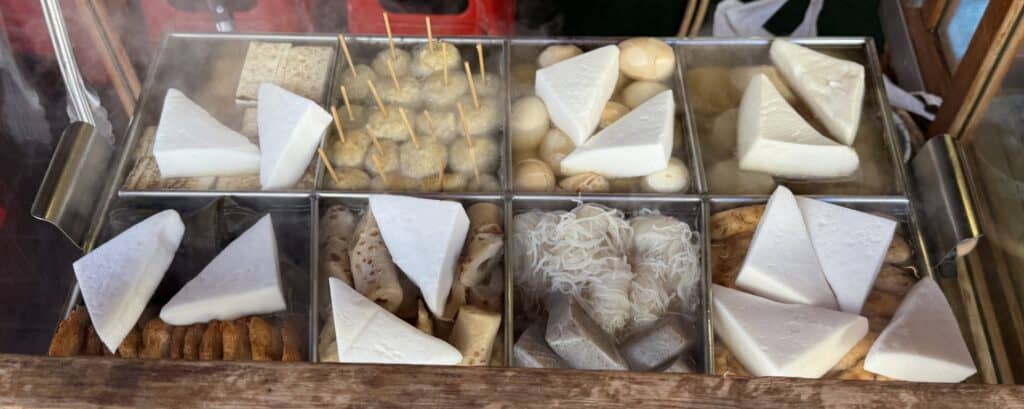
Oden is a type of Japanese simmered dish, often classified as a hot pot. Various ingredients called “tane” (seeds) are slowly simmered in a dashi broth made from bonito flakes and kombu seaweed. On Japanese family dinner tables, oden regularly competes with kimchi nabe (kimchi hot pot) for the title of most popular winter dish.
Popular Oden Ingredients
According to FamilyMart convenience store sales data(As of March, 2024), the top 10 most popular oden ingredients are:
- Thick-cut daikon radish (¥130)
Picture
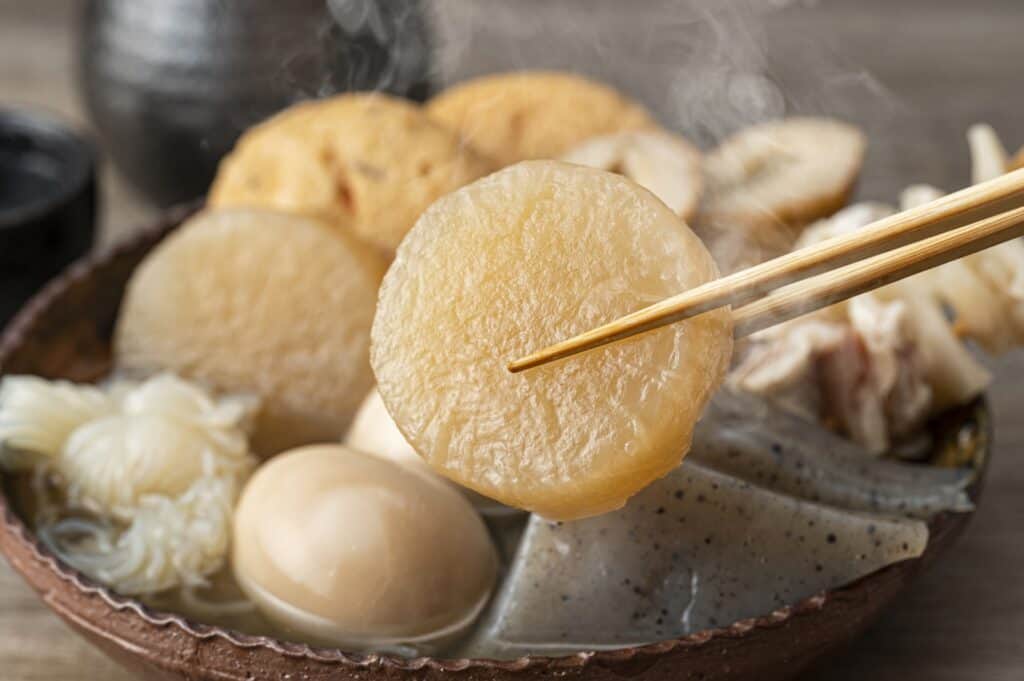
2.Seasoned boiled egg (¥130)
Picture
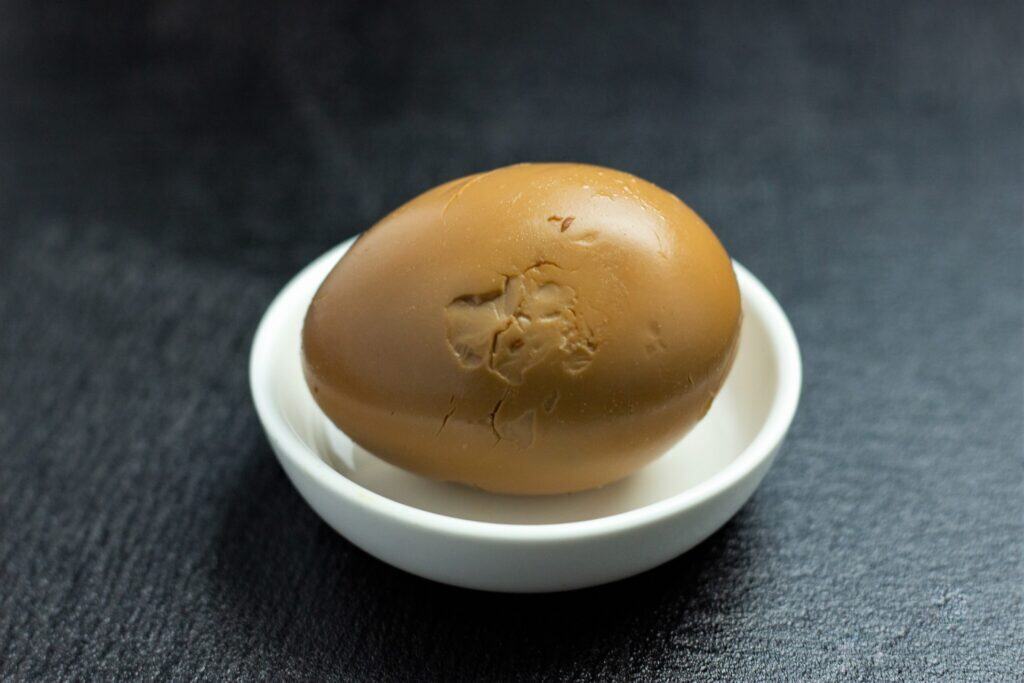
3.Tied shirataki noodles (¥130)
Picture
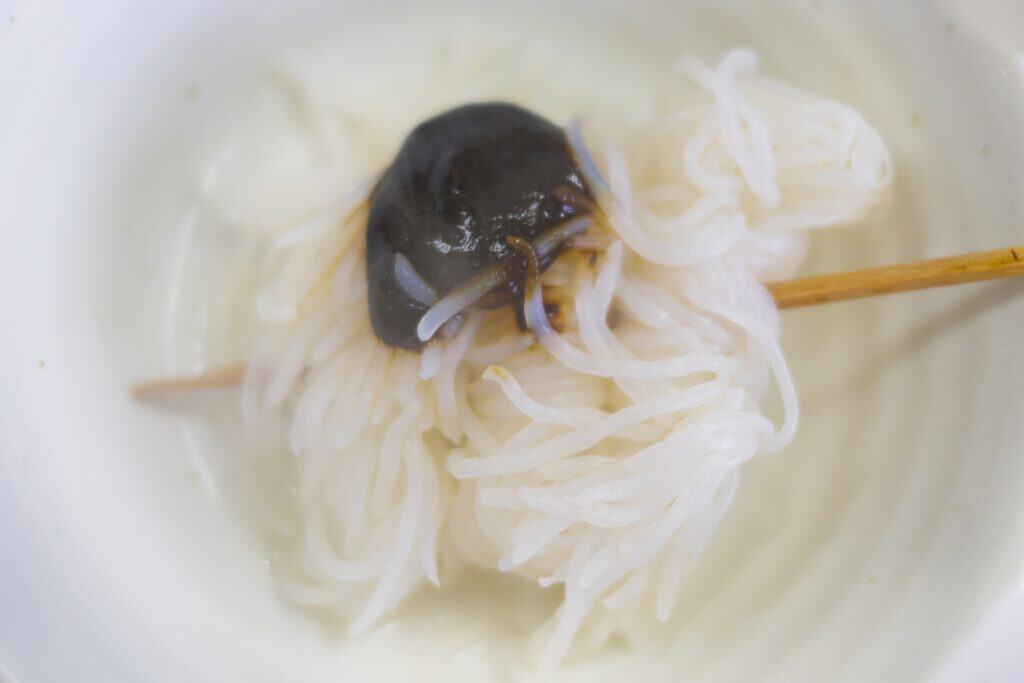
4.Triangular konnyaku (¥130)
Picture
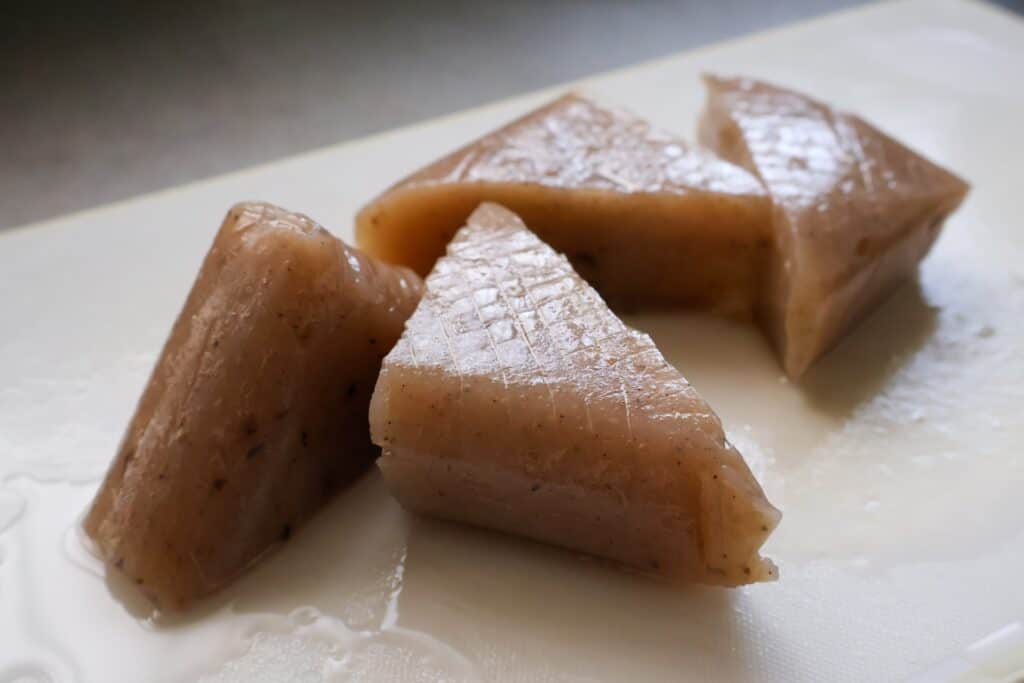
5.Deep-fried tofu (¥130)
Picture

6.Grilled chikuwa fish cake (¥130)
Picture

7.Hanpen fish cake (¥130)
Picture
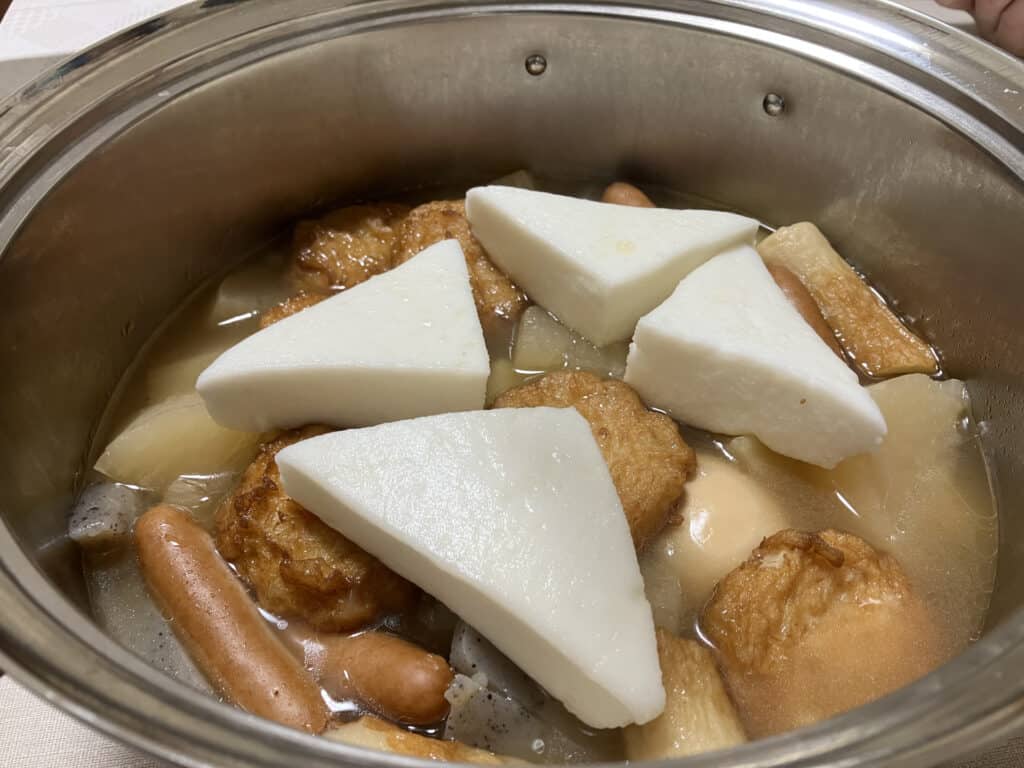
8.Coarse-ground wiener sausage (¥130)
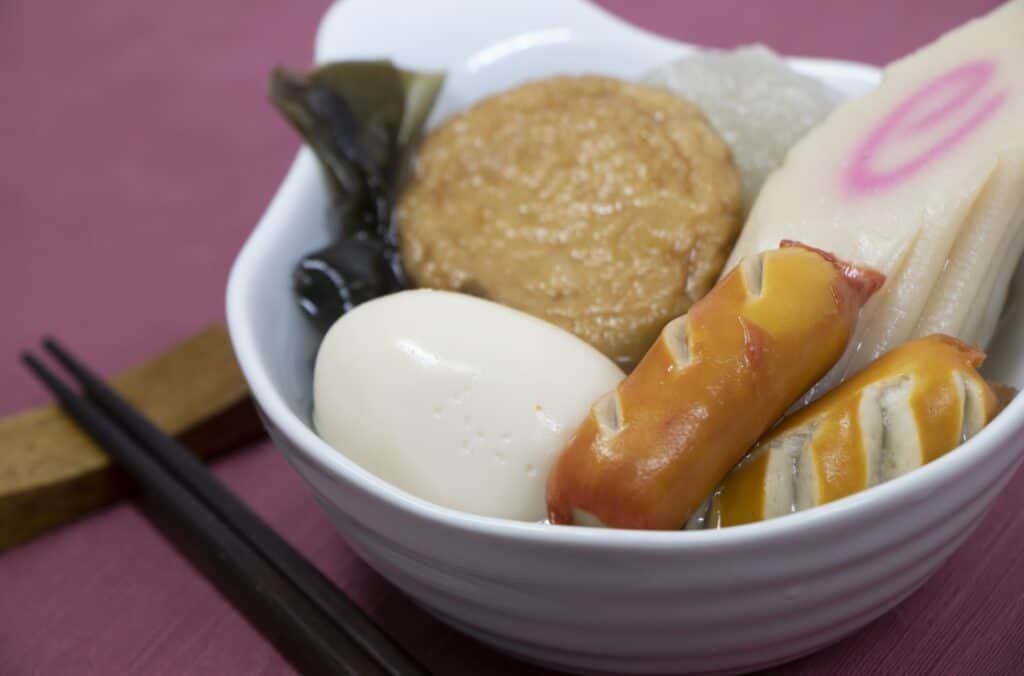
9.Ganmodoki (fried tofu fritter)(¥130)
Picture

10.Kombu seaweed roll(¥130)
Picture
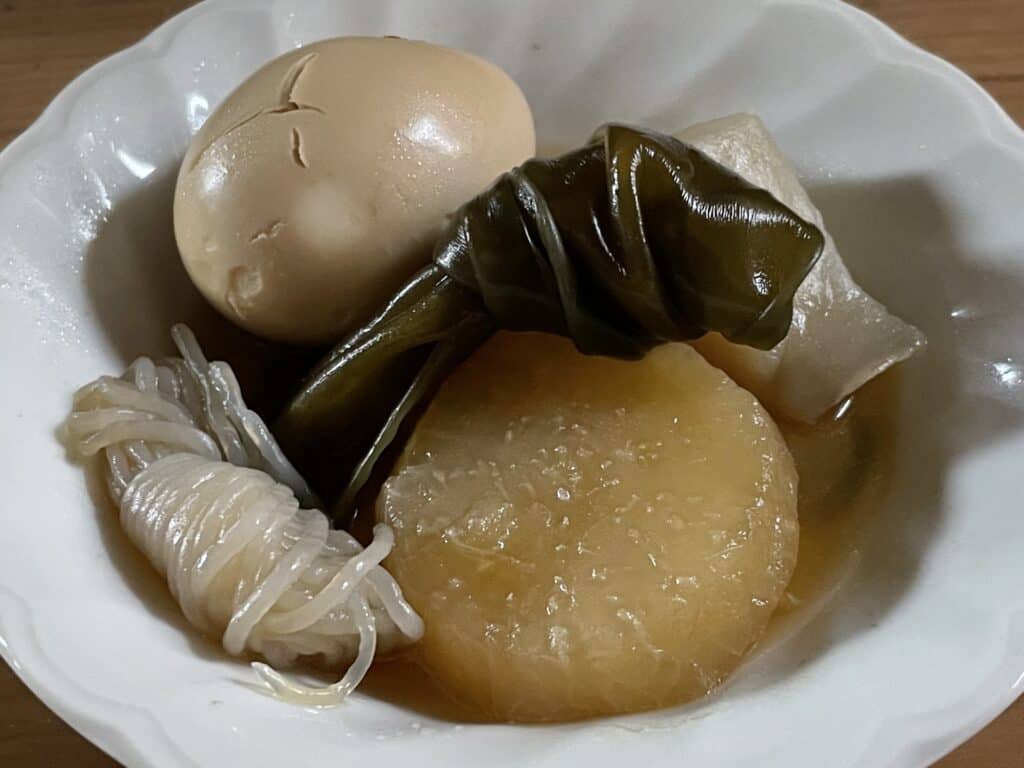
How to Enjoy Oden
According to the “Kibun Nabe White Paper” (an annual hot pot report published by oden ingredient maker Kibun since 1994), the 2018 survey revealed that 47% of people eat oden as a main dish, while 53% consider it a side dish—making the “side dish camp” slightly more prevalent.
Those who enjoy oden as a main dish typically do so at home. They either simmer oden ingredients in dashi broth themselves or purchase ready-made oden from convenience stores to enjoy with rice as a family meal. Oden and rice make for a perfect pairing.
Those who eat oden as a side dish often do so at specialized oden restaurants or izakayas, accompanying it with alcohol. While there’s a strong tradition of pairing oden with warm sake (a famous scene in kabuki theater depicts this combination), it’s increasingly common to see oden enjoyed with beer, wine, or shochu. Interestingly, oden paired with western spirits like whiskey remains relatively uncommon.
When to Eat Oden
According to private weather information company Life Business Weather, convenience stores begin to see oden sales rise when minimum temperatures drop below 25°C (77°F). Their analysis explains why convenience stores start selling oden early in the season. Sales truly take off when minimum temperatures fall below 18°C (64.4°F).
Though initially sold only during winter, oden’s popularity has led most convenience stores to offer it year-round. Today, oden is recognized as an all-season favorite among Japanese consumers.
Oden: A Super Diet Food
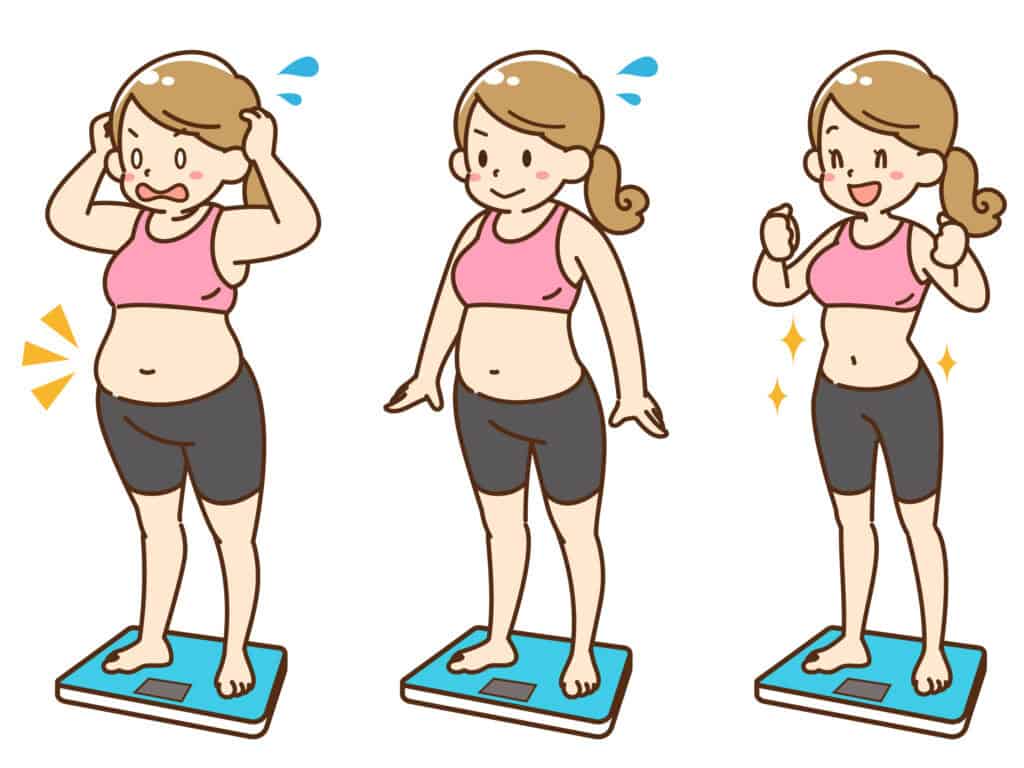
Oden is a nutritionally rich super diet food that won’t cause weight gain even when eaten to satisfaction. Classic oden ingredients like daikon, konnyaku, shirataki, kombu rolls, and beef tendon are low in carbohydrates and fat while offering satisfying volume and texture.
However, some ingredients are less diet-friendly. Processed items like chikuwa and deep-fried fish cakes (satsumaage) are higher in calories and fat, making them less suitable for weight management. Fried processed ingredients, in particular, should be consumed in moderation.
One concern is sodium content. Processed seafood items like hanpen and wieners can contain significant salt—some with over 1g per piece. The oden broth itself has a salt concentration of about 0.7%, meaning a 200cc serving contains 1.4g of sodium. Current daily sodium intake guidelines recommend no more than 7.5g for men and 6.5g for women. In other words, you shouldn’t drink all the oden broth!
Nutritional Benefits of Oden
From a nutritional perspective, the three most beneficial oden ingredients are kombu seaweed, konnyaku, and daikon radish.
Kombu is rich in dietary fiber and minerals including potassium, magnesium, and calcium. Konnyaku contains water-soluble dietary fiber that helps “clean” your intestines and regulate digestion. Daikon absorbs the dashi flavor while simmering, enhancing its umami. Modern variations of oden sometimes include ingredients like stuffed cabbage rolls and tomatoes, which also provide good dietary fiber.
Tokyo’s Three Recommended Oden Restaurants
Otako(お多幸)in Nihonbashi
Japan’s No.1 Soba Experience Near Takeshita Street
Founded in 1923, Otako preserves traditional Nihonbashi food culture, featuring their famous “toumeshi” rice dish. With English language support available, this restaurant serves authentic Japanese soul food. Beyond the Nihonbashi main location, you can find branches in Ginza, Shinjuku, Kanda, Saitama, Chiba, and Kanagawa, making it accessible across greater Tokyo.
The author has visited the Shinjuku, Shinbashi, and Ginza locations in the evening and reports minimal wait times, though the restaurants are typically full. Despite being listed in the Michelin Bib Gourmand, prices remain reasonable—about ¥4,000-5,000 for oden and alcohol.
Otako’s signature dish is their special “toumeshi”—rice topped generously with oden broth and tofu that has absorbed the flavorful broth. This simple yet extraordinary dish is so delicious that many customers specifically visit as a second or third stop of the evening just to enjoy it as a finale to their night out.
Note: Cash payment only.
Restaurant Details
Essential Information
- Name: Nihonbashi Otako Main Store
- Genre: Oden, Izakaya
- Reservations/Inquiries: 03-3243-8282
- Reservation Status: Accepted for parties of 3 or more until the day before (phone reservations only during business hours)
- Address: Otako Building, 2-2-3 Nihonbashi, Chuo-ku, Tokyo
- Access:
- 1 minute walk from Exit B5, Nihonbashi Station (Tokyo Metro Tozai Line)
- 3-4 minutes walk from Exit B3, Mitsukoshimae Station (Tokyo Metro Hanzomon Line)
- 5 minutes walk from Yaesu North Exit, Tokyo Station (JR Lines)
- Hours:
- Mon-Fri: 16:30-22:30 (Last orders 21:30)
- Sat/Holidays: 16:00-22:00 (Last orders 21:00)
- Closed: Sundays, New Year’s holidays, Golden Week, Obon
- Budget: ¥4,000-¥4,999 (evening), ~¥999 (daytime)
- Payment: Cash only
Preview
Location
Maruken Suisan(丸健水産)in Akabane
A Unique Standing Bar Experience
With over 60 years of tradition in Akabane, this shop offers handmade fishcakes processed from whole fish. Featuring about 20-30 types of Kansai-style oden with light broth at reasonable prices, their award-winning fluffy hanpen (fish cake) is especially popular. The standing-only space is always bustling with customers. A specialty is “dashiwari”—adding oden broth to the last 50cc of your sake cup.
This standing bar has unique rules: no service for intoxicated customers, one alcoholic drink per person, 20-minute time limit per table, and no additional orders of oden. Their oden set costs ¥1,000, including four oden items and one alcoholic beverage of your choice. The oden selection is not customizable, so getting the famous hanpen depends on luck. Photography requires prior permission at Maruken Suisan
Akabane is known as the birthplace of “senbero” (getting drunk for ¥1,000) budget drinking establishments. Regular patrons typically start at Maruken Suisan for a light meal and drink before bar-hopping to other famous senbero spots like Ikoi or Kitaya.
Restaurant Details
Essential Information
- Name: Maruken Suisan
- Genre: Oden, Standing Bar
- Inquiries: 03-3901-6676
- Reservation Status: Not accepted
- Address: 1-22-8 Akabane, Kita-ku, Tokyo (inside “Akabane Ichibangai”)
- Access: 3 minutes walk from Akabane Station (JR Saikyo Line, Keihin-Tohoku Line, Ueno-Tokyo Line, Shonan-Shinjuku Line)
- Hours: Tue, Thu, Fri, Sat, Sun: 10:30-21:00
- Closed: Mon, Wed
- Budget: ¥1,000-¥1,999
- Payment: Cash only
Preview
Location
Koronagirai Shinjuku:
All-You-Can-Eat Oden
For those who want to enjoy oden without restraint, this restaurant offers an “Easy Oden Course” with 2-hour all-you-can-drink for ¥3,850 (tax included). The course includes:
- Appetizer: Two kinds of appetizers
- Salad: Homemade potato salad
- Fresh Fish: Two kinds of fresh fish of the day
- Fried Dish: Fried chicken
- Main: Assorted oden
- Rice Dish: Ramen finished with oden broth
- Dessert: Seasonal dessert
Oden refills are unlimited, and the all-you-can-drink option includes beer and other alcoholic beverages. Located just a 1-minute walk from Shinjuku Station’s West Exit, the location is unbeatable. Besides Shinjuku, Koronagirai has branches in Akihabara, Chofu, Ikebukuro, and Tachikawa. While paper cigarettes are restricted to designated smoking areas, electronic cigarettes are permitted throughout—something to note for those sensitive to e-cigarette vapor.
Restaurant Details
Essential Information
- Name: Robata and Oden Koronagirai
- Genre: Izakaya, Oden, Robata Grill
- Reservations/Inquiries: 050-5872-0372
- Reservation Status: Accepted
- Address: 3F, Dai-ni Seishin Building, 1-12-7 Nishi-Shinjuku, Shinjuku-ku, Tokyo
- Access: 1 minute walk from Shinjuku Station West Exit
- Hours:
- Mon, Tue, Wed, Thu, Sat, Sun: 16:00-01:00
- Fri, Day before holidays: 16:00-05:00
- Budget: ¥3,000-¥3,999
- Payment: Credit cards accepted (VISA, Master, JCB, AMEX, Diners)

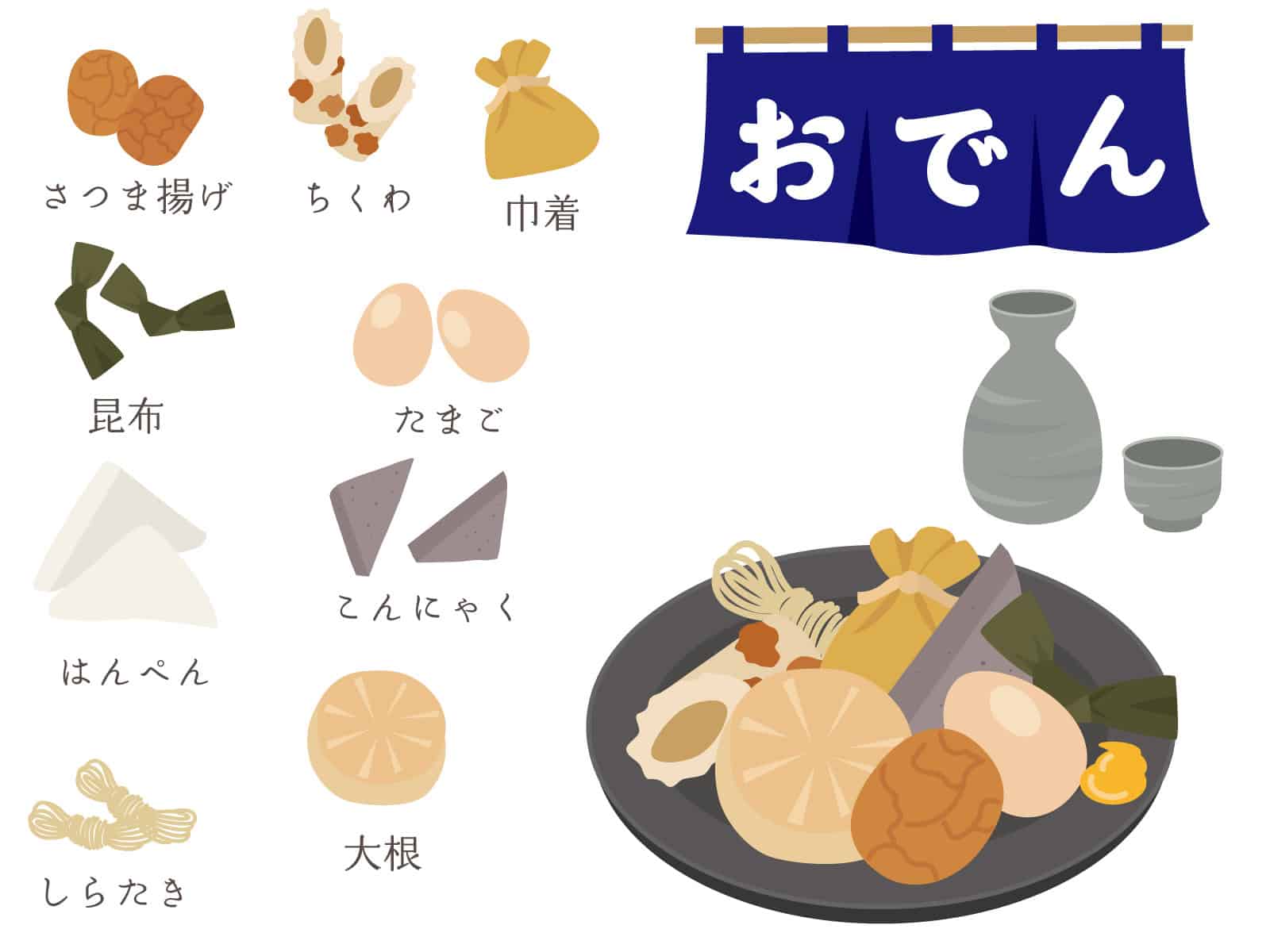

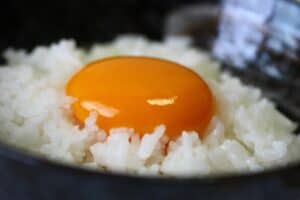

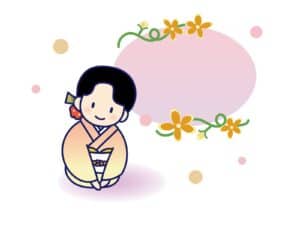
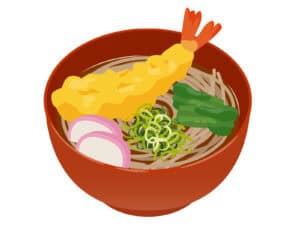

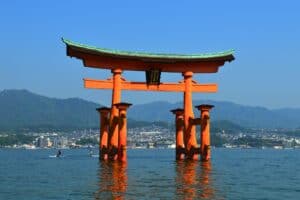
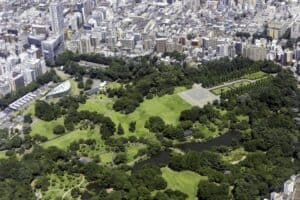
コメント